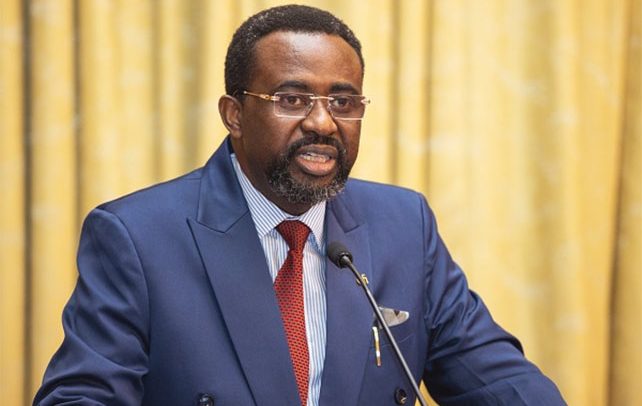Dr. Johnson Pandit Asiama
The Bank of Ghana (BoG) has announced plans to commence foreign exchange (FX) intermediation under the Domestic Gold Exchange Programme beginning October 2025.
Speaking at a meeting with Chief Executives of commercial banks in Accra, the Governor of the Bank of Ghana, Dr. Johnson Pandit Asiama, said the central bank intends to sell US$1.15 billion for the month as part of efforts to deepen the interbank foreign exchange market and strengthen market transparency.
According to Dr. Asiama, the FX sales will be conducted on a spot basis through twice-weekly, price-competitive auctions open to all licensed banks. He explained that there would be no conditions or earmarking for allocations, ensuring a level playing field and transparent access to the market.
“Monthly auction volumes may be adjusted depending on evolving market conditions, but our overarching objectives remain clear – to deepen the interbank FX market, enhance price discovery, and smooth volatility,” Dr. Asiam stated.
He reaffirmed the central bank’s commitment to transparency, noting that the BoG will continue to publish details of all FX market operations and outcomes in line with international best practices.
Dr. Asiama emphasised that consolidating macroeconomic stability requires shared responsibility, pointing out that maintaining a stable exchange rate, expanding credit to productive sectors, and boosting exports demand close collaboration between the Bank of Ghana and the banking industry.
He noted that the strong performance of the cedi, which ranks among the best-performing currencies globally, underscores the growing credibility of the BoG’s policy framework and the renewed confidence of financial markets.
To support the ongoing disinflation process while promoting growth, the Monetary Policy Committee (MPC) voted to lower the policy rate by 350 basis points to 21.5 percent, reflecting confidence that inflation will remain within the medium-term target band of 8 ± 2 percent by the end of the fourth quarter.
The Governor, however, cautioned that the central bank remains mindful of potential risks, including global oil price volatility and possible domestic tariff adjustments, and stands ready to act decisively to preserve stability.
“The easing in policy rates has already started to transmit through the financial system. Treasury bill rates have declined from 13.4 percent in July to 10.3 percent in August, while average lending rates have dropped from 26.6 percent to 24.2 percent. We expect further improvement as banks realign their pricing models to reflect the easing stance,” he said.
Dr. Asiama added that the BoG has introduced a series of new directives to strengthen prudential oversight and risk management, including the Bancassurance Directive, the Large Exposures Directive, and the Guidelines on Credit Concentration Risk Management.
By Ebenezer K. Amponsah


